Strength-based practice is a social work practice theory that emphasizes people’s self-determination and strengths. It is a philosophy and a way of viewing clients as resourceful and resilient in the face of adversity. It is client-led, with a focus on future outcomes and strengths that people bring to a problem or crisis. When applied beyond the field of social work, strength-based practice is also referred to as the “strength-based approach”.
History
Social worker Bertha Reynolds was a proto-theorist for this practice. She criticized the American social work tendency to adopt a psychoanalytic approach (and the corollary dependence on the DSM IV) with clients. It was formally developed by a team from the University of Kansas, including Dennis Saleebey, Charles Rapp & Anne Weick.
In 1997, Rapp wrote “The Strengths Model”, which focused on “amplifying the well part of the patient”. The popularity of his approach spread quickly and in 1999, Dr. Martin Seligman, the president of the American Psychological Association at the time, made an observation that fueled strength-based practice:
“The most important thing we learned was that psychology was half-baked. We’ve baked the part about mental illness, about repair damage. The other side’s unbaked, the side of strength, the side of what we’re good at”.
Since then, the strength-based approach has been adapted and applied to many contexts. In the service sector, for example, it has been applied to case management, education, community development, and working with many different groups, such as young people and people with mental illnesses. Beyond social services, in 1995, Marcus Buckingham and Donald Clifton introduced the strengths perspective to the business world.
Key Elements
The strength-based approach is often referred to as a response to more deficit-focused or pathological approaches. For example, Laursen and Nissen noted that in the field of youth justice, the mainstream corrections model focuses on risks, needs, and addresses weaknesses. Alternatively, the strength-based approach enhances strengths, and builds on characteristics that are already present in individuals.
Although applied differently depending on the population and service, the approach has been characterized as a philosophy or lens through which people are viewed and through which programs and agencies operate. According to Powell and Batsche, a strength-based philosophy is a critical belief, an all-pervasive attitude that informs a professional’s interactions with clients. Ideally, an entire agency will adopt the approach, and, through ongoing training, this attitude-change will occur in all staff, transforming the way they view their work, their colleagues, and, of course, the people and communities they work with.
This strength-based philosophy holds the core belief that all individuals have strengths and resources. The focus of the practice is on a person’s skills, interests and support systems. Its simple premise is to identify what is going well, to do more of it, and to build on it.
Outcomes
Evaluation of the effectiveness of the strength-based approach is limited; however, some studies have shown that working with individuals and communities through a strength lens improves individual outcomes, such as quality of life, employment, and health.[18][19] On a more societal level, a strength-based approach promotes positive views of individuals and takes focus away from blame or judgement. This alternative view may contribute to de-stigmatization of certain groups and may increase positive political attention and social support. Overall, there is a need for more research and further evaluations of the strength-based approach.
References
http://www.oxfordbibliographies.com/view/document/obo-9780195389678/obo-9780195389678-0006.xml
McCashen, Wayne (2005). The Strengths Approach. Bendigo, Victoria, Australia: St Luke’s Innovative Resources.
Healy, Karen (2005). Social Work Theories in. Hampshire: Palgrave McMillan.
Rapp, C. (1997). The Strengths Model: Case Management with People Suffering from Severe and Persistent Mental Illness, 1st Ed. New York: Oxford University Press.
Buckingham, Marcus (2007). Go Put Your Strengths to Work: 6 Powerful Steps to Achieve Outstanding Performance. New York: Free Press. Nissen, L. (2006). Bringing strength-based philosophy to life in juvenile justice. Reclaiming Children and Youth, 15, 1, p. 40-46.
Saleebey (2002). The Strengths Perspective in Social Work Practice, 3rd Ed. Toronto: Allyn and Bacon.
Winter-Messiers, M., Herr, C. M., Wood, C. E., Brooks, A. P., Gates, M. M., Houston, T. L., & Tingstad, K. I. (2007). How far can Brian ride the daylight 4449 express? A strength-based model of Asperger Syndrome based on special interest areas. Focus on Autism and Other Development Disabilities, 22, 2, 67-79.
Buckingham, Marcus (2007). Go Put Your Strengths to Work: 6 Powerful Steps to Achieve Outstanding Performance. New York: Free Press.
Laursen, E. K. (2003). Frontiers in strength-based treatment. Reclaiming Children and Youth, 12, 1, 12-17.
Nissen, L. (2006). Bringing strength-based philosophy to life in juvenile justice. Reclaiming Children and Youth, 15, 1, p. 40-46. Roebuck, B., Roebuck, M., & Roebuck, J. (2011). From Strength to Strength: A Manual to Inspire and Guide Strength-based Interventions with Young People. Cornwall: Youth Now Intervention Services.
Powell, D. S. & Batsche, C. J. (1997). A strength-based approach in support of multi-risk families: Principles and issues. Topics in Early Childhood Special Education, 17, 1.
Roebuck, B., Roebuck, M., & Roebuck, J. (2011). From Strength to Strength: A Manual to Inspire and Guide Strength-based Interventions with Young People. Cornwall: Youth Now Intervention Services.
Laursen, E. K. (2003). Frontiers in strength-based treatment. Reclaiming Children and Youth, 12, 1, 12-17.
Nissen, L. B., Mackin, J. R., Weller, J. M. & Tarte, J. M. (2005). Identifying strengths as fuel for change: A conceptual and theoretical framework for the youth competency assessment. Juvenile and Family Court Journal, 1-15.
Barwick, H. (2004). Young Males: Strength-based and Male-focused Approaches, A Review of the Research and Best Evidence. New Zealand: Ministry of Youth Development.
Krabbenborg, M. A., Boersma, S., & Wolf, J. R. (2013). A strengths based method for homeless youth: Effectiveness and fidelity of Houvast. BMC Public Health, 13, 359-369.
Barwick, H. (2004). Young Males: Strength-based and Male-focused Approaches, A Review of the Research and Best Evidence. New Zealand: Ministry of Youth Development.


